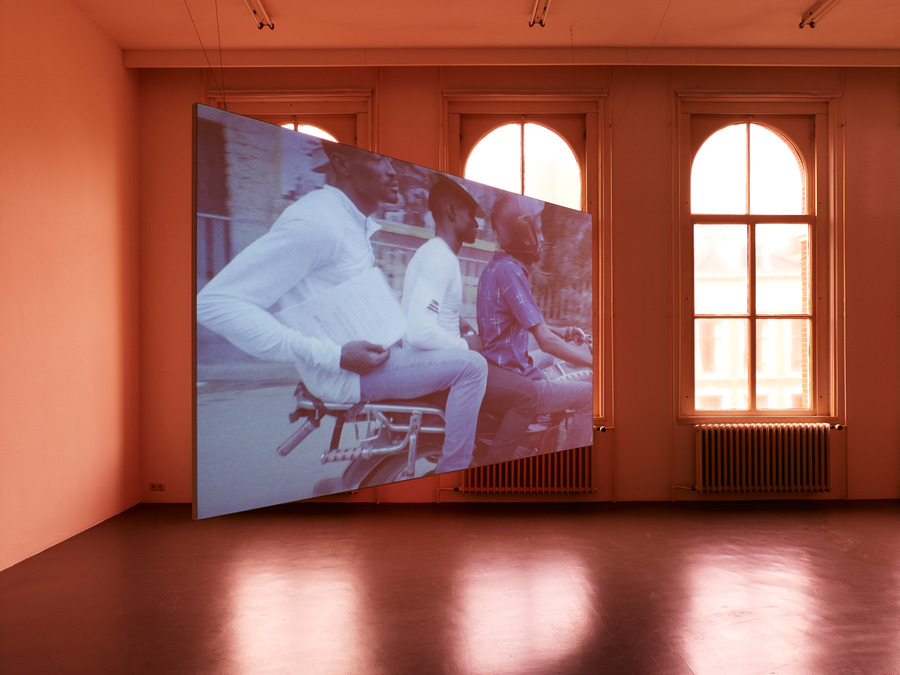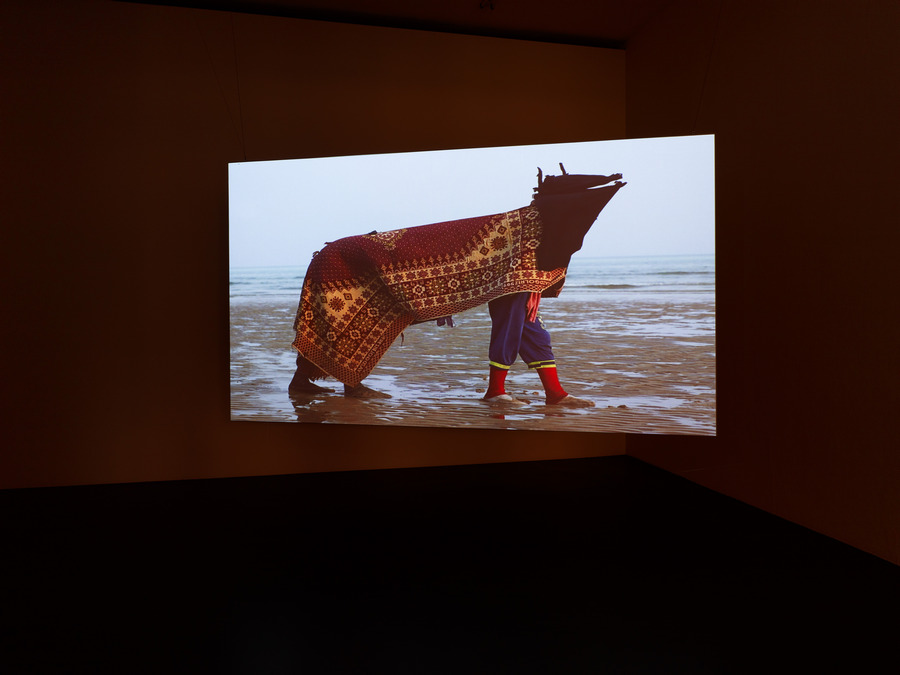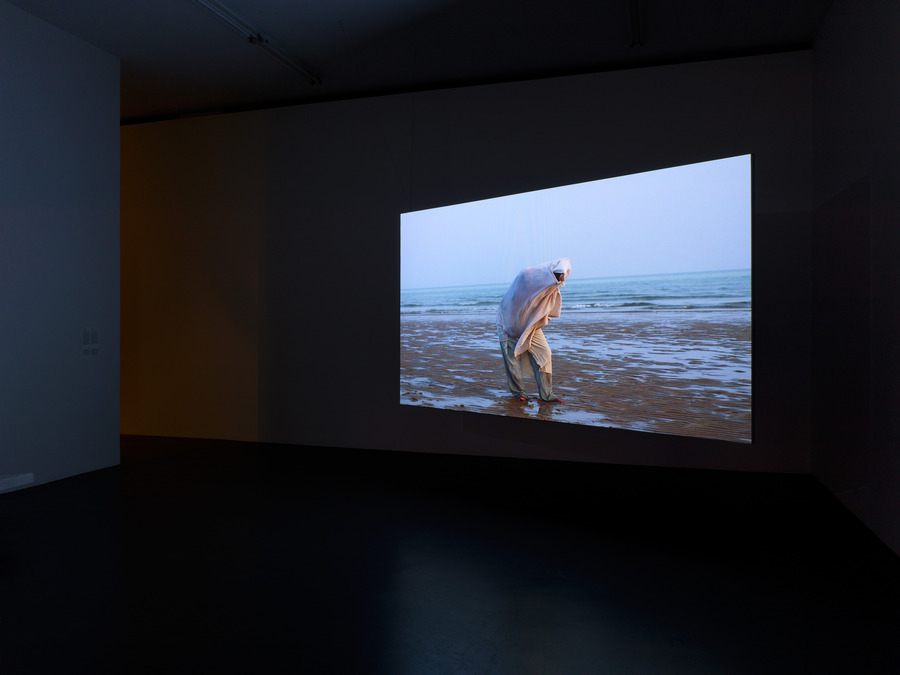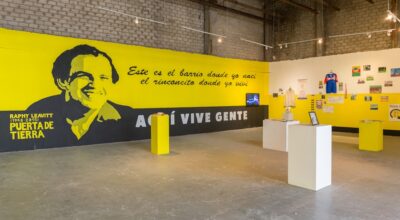
THE OVERLAPPING IDENTITIES IN ALIA FARID’S RECENT FILMS
Alia Farid’s work explores contemporary urban life against the backdrop of colonial histories in Kuwait and Puerto Rico, where the artist lives and works. Farid has especially explored the correlations between the shaping of environment and perception. Her work has dealt with social displacement and migration, national identity and self-representation, as well as the enduring legacy and impact of Western imperialism. She interprets her research-based artistic practice through drawings, installations, public interventions, and, most recently, film.
Farid’s most recent artistic research centers on communities who, in one way or another, actively resist the assimilation of modern culture. She draws out and articulates through various micro-narratives and actions enmeshed in daily life. Her subjects are located in the Global South, a descriptor the artist purposefully employs to both locate and complicate the degrees of separation between the Caribbean and the Middle East—the two regions where Farid grew-up, and which inspire much of her work.

Her exhibition at Witte de With presents a newly commissioned film installation, along with her earlier film At the Time of the Ebb (2019). For this film, she travelled a 100 nautical kilometers from the easternmost tip of the Arabian Peninsula to the Iranian island of Qeshm to film the annual celebration of Nowruz Sayadeen [in English, Fisherman’s New Year]. Such is the stage for Farid’s film essay, a melancholic meandering through the surviving festival traditions of an island seemingly cast out of time or, rather, living according to a rhythm very much its own, attuned to ancient seasonal cycles. The work foregrounds a number of local residents, whose performances draw attention to their customs, traditions, material surroundings and natural environment—from a brightly decorated domestic interior to an expansive sea view overlooking the Arabian Gulf.
Her new work Maske Paske Wi (2020) is shot in Haiti, and centers on the after-effects of the country’s historic revolution. In both films, Farid delves into how group rituals, social ruptures, and individual acts of resistance may admit, escape, alter or reject definition.
For years, Farid has sought to investigate the impact of colonialism and modernist projects on different cultures. She has done so working between art, architecture, and anthropology. Her work is, in principle, socially networked. Beyond having as an end the creation of a finite image alone, her aim is to build a sense of trust amongst those she collaborates with. And, above all, to help knit a social fabric by identifying and fostering creative affinities in the communities she comes to know or create through her art making.


Maske Paske Wi saw Farid travel to one of her two regions of origin, the Caribbean. Specifically, a number of neighborhoods within Haiti’s capital, Port-au-Prince. The work is developed after Farid’s time spent on the island this winter, during which time protests against the country’s current administration intensified considerably in the face of rising inflation, high rates of unemployment, currency devaluation, and violence. As one of a number of activities, Farid worked closely with local residents on the realization of an informal structure that could both generate the possibility of income, while seeking to carve out space and time for conviviality. What resulted, was a dance and costume contest after which this work is named, which translates from Haitian Creole to ‘Perform because why not’.
The film installation foregrounds a number of local residents, whose performances draw attention to their customs, traditions, material surroundings, and urban environment. Their speech alternates between French and Haitian Creole. And, rather than focusing on linguistic meaning, Farid’s interpretation draws from contextual cues: from the informal modes of production, distribution, and convening, to the cultural forms originated by Haitians within structures of feeling, producing, communicating and remembering.
The latter is showcased in the performances of the three prize winners of Maske Paske Wi, who each manifest a confluence of characters, and of the past and present, typical of Haitian Kanaval (‘Carnival’). Each does so by way of a different approach, including the lyrical repurposing of discarded materials in the creation of alternate identities; the donning of traditional attire whose colors are representative of Haitian loa (the spirits of Haitian vodou); the characterization of disenchantment with civilizing processes, as signaled in part by the pairing of a suit jacket with basketball shorts; and the rendition of a piece of Haitian folkloric repertoire, Erzulie. Written at the end of the nineteenth century and poignantly recited in the present, the song appeals to Erzulie, the patron spirit of love, gratitude, and healing, questioning why hard work has yielded to financial well-being.

In the exhibition, the relationship between Farid’s two primary points of reference –the Caribbean and the Middle East– is further addressed through a shared infrastructure for the two video works. This modality of coexistence creates an inconspicuous mis-en-scène. Sundown hues are cast into the space through window filters and colored projection screens. This effect, which seemingly softens the exhibition space, alludes to the works’ unraveling of narrative at the same time; what could be considered dusk or dawn. It is within this unified environment, that a confluence of sound and image occurs.
And, while each channel may be regarded individually, as one moves through space a multitude of echoes and overlaps unfold. On the one hand, between the urban settings and natural environments of Port-au-Prince and Qeshm respectively, as much as, on the other, between scenes of convening, music-making, performance, and ritual.
The artist’s new work is commissioned by Witte de With Center for Contemporary Art in partnership with The Power Plant Contemporary Art Gallery, Toronto, Canada, and Contemporary Art Museum St. Louis, United States. This is the artist’s first exhibition in the Netherlands.

ALIA FARID, A SOLO EXHIBITION
Curated by Rosa de Graaf
Witte de With Center for Contemporary Art, Witte de Withstraat 50 – 3012 BR, Rotterdam
19 January — 23 August, 2020
Witte de With reopened its doors to the public on June 3rd, 2020. For the month of June, its opening hours are Wednesdays, Thursdays and Fridays, from 1:30 to 6:00 PM. To ensure that everyone can stay 1.5 meters apart, visitors must reserve a time slot on a specific date by buying an online ticket beforehand.
También te puede interesar
“AQUÍ VIVE GENTE”. CONTRA EL DESPOJO TERRITORIAL
Este proyecto en Espacio Odeón (Bogotá) reúne a cuatro organizaciones que por años se han dedicado a reivindicar, defender y reclamar el territorio y su lugar en él. En su trabajo, Brigada Puerta de...
22 GALERÍAS, 77 ARTISTAS, EN LA 3° EDICIÓN DE GALERÍA WEEKEND SANTIAGO
Del 16 al 20 de octubre las galerías de Santiago vuelven a abrir sus puertas en horarios ampliados durante un fin de semana como parte de Galería Weekend, evento único en su tipo en...
MOTAS DE POLVO EN EL MAR: ESCULTURA CONTEMPORÁNEA DEL CARIBE FRANCÉS Y HAITÍ
La muestra "Dust Specks on the Sea" se centra en obras escultóricas de 22 artistas de Guadalupe, Martinica, Guayana Francesa y Haití que, a través de diversos enfoques temáticos, materiales y procesos, hablan de...



